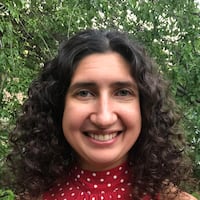Atlanta Public Schools is delaying the return of in-person learning for students in third through 12th grades, while Gwinnett County Public Schools will resume in-person instruction Monday for all students who chose that option.
APS late Friday announced changes to its plan to reopen school buildings.
But Atlanta’s youngest students, those in prekindergarten through second grade, as well as some special education students, will still have the option of returning to classrooms Monday as planned.
Students in third through 12th grade had been scheduled to return to buildings the first week of February. Now, APS says students in third through fifth grades will go back Feb. 8. Middle and high school students will return Feb. 16.
Meanwhile, Gwinnett County Public Schools will resume in-person instruction after switching to full digital learning this week due to staff shortages amid the coronavirus pandemic.
Associate Superintendent Steve Flynt told the school board at a Thursday meeting that 780 staffers were quarantined, including 473 teachers — 13 more teachers than when the decision was made to close.
Flynt said few cases could be traced back to exposure at school.
“We believe in the school is actually a very safe place for students and teachers and we can mitigate the spread there,” he said.
The Cobb and Fulton County school districts have, like Gwinnett, offered parents the choice between in-person and digital learning since the fall semester. Fulton County paused in-person learning districtwide last week as COVID-19 cases surged. Cobb County switched to online-only this week, but is set to reopen classrooms next week.
Atlanta, Clayton and DeKalb County school systems are among the few that have remained entirely online since mid-March. DeKalb plans to review whether it will reopen classrooms next month.
One third of Atlanta students enrolled in the district’s traditional schools want to return to buildings, with the rest opting to remain enrolled in virtual classes.
As of Thursday, 1,763 students and 1,059 staffers in Gwinnett had reported testing positive for COVID-19 since school buildings reopened in August, according to an AJC analysis of the school district’s COVID reports. The school district, Georgia’s largest, has more than 177,000 students and 23,000 employees.
At the Gwinnett school board meeting, Flynt said teachers with COVID-related concerns should work with human resources.
“There are accommodations that could be made, depending on the situation,” Flynt said.
But Katie Nelson, a seventh-grade science teacher, told school board members that the district denied her request to work from home although she has a chronic condition that causes shortness of breath. Nelson said she had been out on medical leave and will leave Gwinnett next school year to work for another school district.
Seventy-five people addressed the school board at Thursday’s meeting, extending the meeting past midnight for a battle between teachers and parents about reopening schools and the overall performance of Superintendent J. Alvin Wilbanks, who has the sole authority to open and close campuses.
Some said COVID case numbers were too high for in-person learning or asked the school district to come up with metrics, such as positivity rates, that would trigger school closures so the decision-making process would not seem arbitrary. Many teachers wore black T-shirts printed with the words “In Loving Memory of Maude Jones” and “Say Her Name.” Jones, a special education paraprofessional at Rock Springs Elementary, died Jan. 4 of COVID-19 after becoming sick while quarantining due to exposure at school.
“Our worst fears have been realized,” said Amber Karasik, a teacher at Jenkins Elementary. “Maude deserved better. Every GCPS staff member deserves better.”
Dozens of parents said special needs children should be allowed in classrooms even when the rest of the district is closed, citing federally-mandated services they said could not be accomplished virtually. Parents also said Gwinnett should close individual schools with staffing shortages rather than the whole district.
Laurie Farley said her son is a sophomore at Paul Duke STEM High School, where there are three current positive cases out of 1,100 students, according to school district data.
“We’ve taken away the ability for in-person learning because of three sick people,” she said. “I pay taxes for my child to go to a school building. ...I recognize this is a logistical challenge. Let’s figure it out. What we’re doing isn’t working.”
Kristal Dixon contributed to this report.
Keep Reading
The Latest
Featured




